Plucking Flowers from the Garden: The Mystical Meaning of the Ceremonies of the Mass
The traditional Roman Rite contains “nothing superfluous”—as Jean-Jacques Olier saw so well
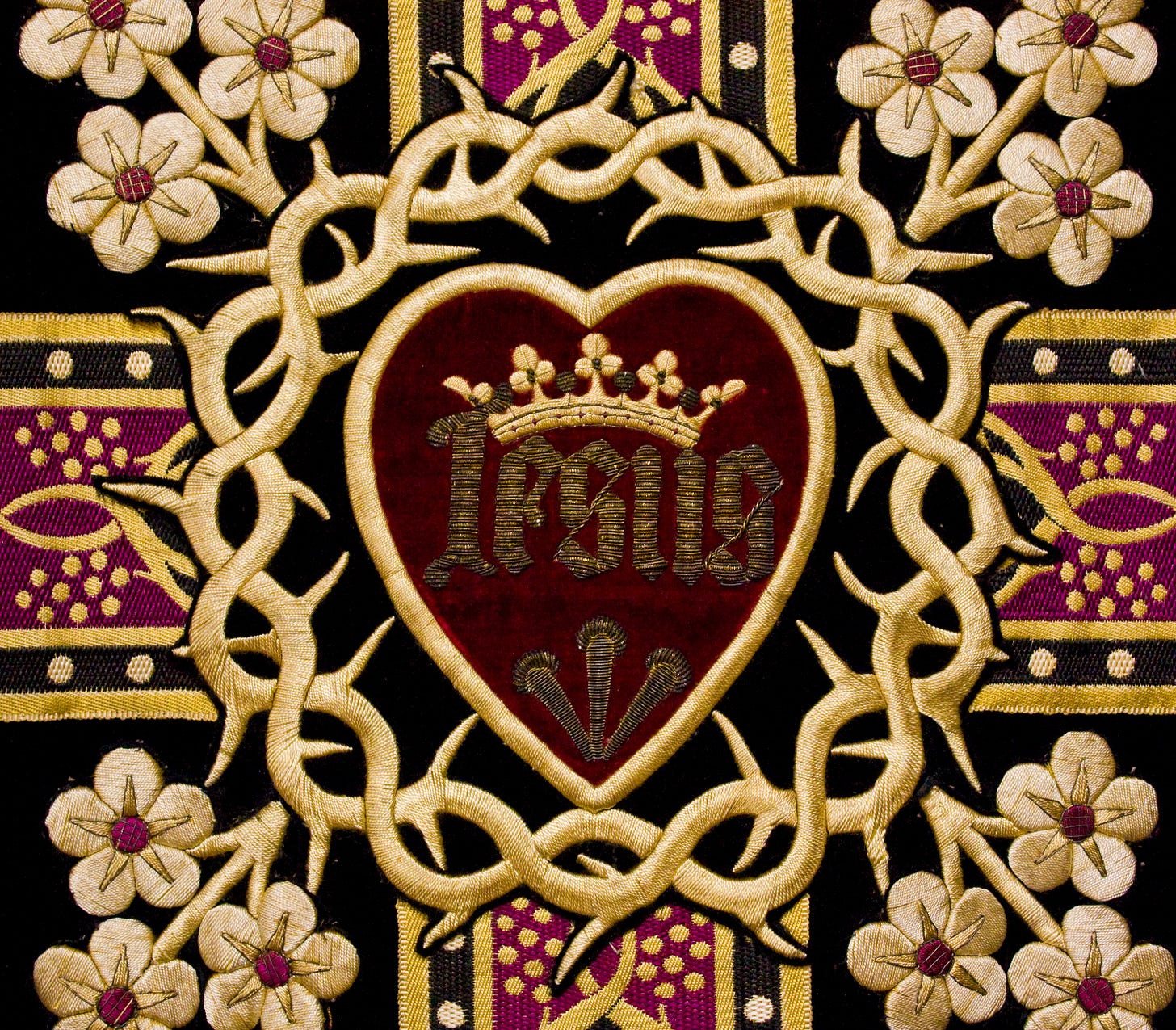
In lieu of the Weekly Roundup, which will resume next week.—PAK
The famous Catechism of the Council of Trent—the authority of which, by the way, was reaffirmed by Pope John Paul II when promulgating his own Catechism of the Catholic Church, so it is by no means a “superseded” document—has a magnificent passage that can never be quoted too often:
The Sacrifice [of the Mass] is celebrated with many solemn rites and ceremonies, none of which should be deemed useless or superfluous. On the contrary, all of them tend to display the majesty of this august Sacrifice, and to excite the faithful when beholding these saving mysteries, to contemplate the divine things which lie concealed in the Eucharistic Sacrifice.
Striking, isn’t it? There’s nothing superfluous in the Roman Rite of Mass, that is, the Tridentine rite (for that, obviously, is what this Tridentine catechism is talking about). Someone should have passed along the message to the busy-beaver liturgical “reformers,” whose three favorite activities were cutting, chopping, and cleaving, all in the name of removing accretions and useless repetitions that weren’t there. Here is not the place for me to respond to their “SlimFast” arguments; that’s what I do in two of my books, Turned Around and Close the Workshop. Getting back now to the Catechism of Trent, it continues in a similar way to my last sentence:
On these rites and ceremonies we shall not dwell, since they require a more lengthy exposition than is compatible with the nature of the present work; moreover priests can easily consult on the subject some of the many booklets and works that have been written by pious and learned men.
What did these “booklets and works by pious and learned men” look like?
Fr. Jean-Jacques Olier (1608–1675), a spiritual writer from France’s Grand Siècle, is best known for founding the order whose members were known as “Sulpicians.” In training men for the priesthood, Olier wished that they have a profound understanding of the rites and ceremonies of the sacred liturgy. To this end, he wrote a work called The Mystical Meaning of the Ceremonies of the Mass. Incredibly, this classic never made it across the language divide into English prior to 2024, when Angelico Press brought out a fine translation by David Critchley (who, incidentally, also translated Fr. Claude Barthe’s A Forest of Symbols: The Traditional Mass and Its Meaning).
I now share with readers some favorite passages from Olier’s book. Enjoy!
The significance of “accidents” in the liturgy
In sum, every outward act is no more than an expression of what happens inwardly in the mystery, which cannot be expressed by a single outward figure. (36)
We should not be surprised if great matters are contained in symbols which seem so small and of such little account; for there is nothing trivial in the thoughts of the Church about God and His Holy Spirit, which entirely directs her, and which does as much for her as it did for the Synagogue, where it left nothing that was not concealed in mysteries: Omnia in figura contingebant illis: “All these things happened to them in figure” (1 Cor 10:11). Everything in the Synagogue was a figure of holy and magnificent events that were going to happen. And exactly the same thing is true in our case, since there is nothing in the Church which is not a figure of something hidden, either in present mysteries or in those which happened in the time of Jesus Christ, about whom the Church never ceases to talk, and whose truth and beauty she can never sufficiently describe.
And the remarkable thing is that in those days not even the least items were without mystery, as Our Lord notes in talking about the Law: Iota unum aut unus apex non praeteribit a lege, donec omnia fiant (Mt 5:18): the smallest details of the Law will not disappear without seeing the accomplishment of the truth that they contain. And so we see that in the Law and in its figures the least details were figurative of promised mysteries and truths. In the same way, in the Church of God, the smallest details of the ceremonies are figures of hidden mysteries; and these mysteries are all the greater because the things which represent them are small in themselves, following the custom of Our Lord, who always hid his greatest and most holy mysteries in the smallest things, as for example he hid his great mystery of the Eucharist under the veils of bread and wine, and his immense and generous graces in the vessel of that slight and humble servant of God the Holy Virgin. (80–81)
The devotion of the Church…is no more than an expansion and an unfolding of the piety and devotion of Our Lord Jesus Christ. (84)
Just as ceremonies have been established in the Church to express outwardly to the faithful what is happening inwardly in the heart of the sacraments and mysteries, the ceremonies of the holy Mass and all the prayers and actions of this august sacrifice have been arranged to explain to the faithful what is happening within Jesus Christ and his divine mystery. (145)
In this way we can appreciate the intelligence and the wonderful purposes of the Church in what she ordains for us, in what appears to be nothing other than a simple outward ceremony. The Church does not have trifling purposes or feeble thoughts; there are a thousand purposes hidden in her wisdom which we do not understand. (204)
The importance of the priest’s performance of the rituals
The priest must not perform the ceremonies just for his own sake; that is to say, to awake a spirit of devotion within himself, or to express the respect that he has for the mysteries; but through the ceremonies he must also create the same devotion and the same respect among the faithful, so that, seeing this elaborate worship and the great reverence shown by the priests, seeing works of such magnificent and such august art, seeing that all the clergy humble themselves and lose themselves before the majesty of God, the faithful may say among themselves, God must be great and worthy of worship, since He has before Him so many blessed spirits who bend their knee in His presence, like the saints and angels who are represented by the priests and the ecclesiastics who prostrate themselves before Him. This Lamb must be extraordinarily beautiful and powerful, since these four and twenty-four elders throw themselves at his feet and offer him their crowns with respect and reverence.
We observe by experience the respect which these things impress on the spirits of the poorest and the most ignorant. A simple verbal explanation does not enable them to conceive of the hidden mysteries, nor to revere that which is most sacred; but with these outward and tangible signs, they ready themselves more easily to do their duty and to show the reverence which they owe to God.
Once oral instruction is over, it fades from the memory in slower spirits; but ceremonies are continuous throughout the service, and keep people in an attitude of respect and reverence. The ceremonies preach to the eyes in the same way that speech preaches to the ears; and they are all the more effective if they are easily felt, and well suited to slower temperaments.
Our Lord Jesus Christ, who governs his Church, and who enlivens it throughout with his Spirit, works in his faithful through all the instructions that he gives for worship and for showing respect to God his Father: as a result of which, the Church’s ceremonies are the organs and instruments of respect which the spirit of Jesus Christ imprints in the hearts of the faithful; they are outer wrappings of the spirit just as much as speech is; and those who assist in the Church in faith and with respect, while the ceremonies are carried out according to the institution of the Holy Spirit, receive from them very striking and very important gains; they receive divine light and inspiration, because the priest who there represents Our Lord, being filled with his spirit, and using the ceremonies as so many different instruments and means to summon the people to respect and to love, causes the operations of that spirit to break out everywhere. This is why the things which the priest uses are blessed, and why we even bless bells, because they serve the Holy Spirit as means to awaken the piety and devotion of the people, and to summon them to their duty, and so the bells must be prepared for so holy a function by the blessing of the Church. (5–6)
Moreover, the priest’s acts of reverence are an example of humility before God (for the faithful):
While the Credo is sung, the priest uncovers his head and sometimes bows, and on some occasions he also kneels at the words: Et incarnatus est . . . , to testify to the homage that he pays to the grandeur of God, and the respect that he pays to his Father in his state of glory; as the head of the faithful, he sets everyone an example of bowing and humbling himself before God. (127)
The progressive learning of the holy mysteries
The holy Church, as the Spouse of Christ, following his track and walking in his footsteps, acts towards her children in the same way that Jesus Christ acts towards her, to give them a progressively greater knowledge and understanding of her mysteries. For she does not reveal her most hidden treasures straightaway to those who convert to the faith; but she first provides her new members with a foundation and secures them in their belief in Jesus Christ, Man and God; afterwards she reveals her mysteries to them little by little and in an ordered fashion, having regard to those members’ state and capacity. (143)
How the Offertory rightly anticipates the Sacrifice
The prayer that the priest recites while elevating the chalice to offer the wine, Offerimus tibi, Domine . . .: “We offer unto Thee, O Lord, the chalice of salvation, beseeching Thy clemency, that it may rise up in the sight of Thy divine majesty, as a savor of sweetness, for our salvation, and for that of the whole world. Amen,” expresses well the thought that the offering which Our Lord makes to God through the hands of the priest is a preparation and an offering that is part of the sacrifice, and which contributes to its accomplishment—in the same way that all the offerings of victims that were presented to God before being put to death, or being thrown into the fire, formed part of the ancient sacrifices. So much so that this prayer is said some time before the sacrifice consisting in the death of Jesus Christ and his consummation in God is expressed with these words, ut nobis Corpus et Sanguis fiat dilectissimi Filii tui Domini nostri Iesu Christi: “that it may become for us the Body and Blood of Thy most beloved Son Jesus Christ our Lord” (part of the prayer Quam oblationem, before the consecration), and in two signs of the cross, one over the bread, and the other over the chalice, which show that the priest, through the power of his words, as it were by the swift stroke of a knife, is going to separate the body of Jesus Christ from his blood, and renew the sacrifice of the cross, in which they were separated one from the other.
After the priest has offered the chalice, he says with bowed head and with hands joined together on the altar, In spiritu humilitatis, et in animo contrito suscipiamur a te, Domine: “In a humble spirit, and a contrite heart, may we be received by Thee, O Lord.” This expresses the painful and humiliated state of Jesus Christ. He adds, et sic fiat sacrificium nostrum in conspectu tuo hodie, ut placeat tibi, Domine Deus: “And may our sacrifice so be offered up in Thy sight this day that it may be pleasing to Thee, O Lord God.” He calls on the Father to help him with His spirit and his grace, so that he may offer Him an acceptable sacrifice. That shows clearly that this offering of bread and wine which has just been made is only a preparation for the completion of the sacrifice. And that is even better expressed by the following prayer, Veni, sanctificator, omnipotens aeterne Deus, et benedic hoc sacrificium tuo sancto nomini praeparatum: “Come, O Thou who makest holy, almighty, eternal God, and bless this sacrifice, prepared for Thy holy name.” As he says these words, the priest raises his hands and eyes to heaven; he calls on the Holy Spirit to draw the Spirit down upon him- self; and like a second Elijah he calls down fire from heaven to consume this sacrifice which is so far only prepared: tuo sancto nomini praeparatum. (139–40)
Explanation of pre-55 practices
Why the priest bows to the crucifix
When we sing the Gloria in the Office, we bow before the Holy Trinity in union with Jesus Christ Our Lord, who gave himself to us, and on whom we do not look from afar—as the priest, at the corner of the altar, does, when he turns towards the crucifix, because at that moment the priest represents the Old Testament, which looked on Our Lord from afar, and could not see him other than in figure, and hidden behind the veils of the tabernacle. (98)
Why the priest reads the Gospel while the deacon chants it
The priest reads the Gospel which the deacon afterwards sings aloud, to signify that in the Church the apostles and the other ministers of the word of God have fulfilled this commandment of Our Lord: Quod dico vobis in tenebris dicite in lumine, et quod in aure auditis praedicate super tecta: “That which I tell you in the dark, speak ye in the light: and that which you hear in the ear, preach ye upon the housetops” (Mt 10:27). It is also to testify that Jesus Christ proclaimed his Gospel in the weakness of his spirit, whereas by contrast he preached it in the person of his apostles in that same Spirit’s strength and power. (117)
Call to offer every action of daily life in union with Christ’s sacrifice
Christians must live in a similar state of companionship with Christ, so that they see themselves continually beside him in their works, seeing him act before their eyes, in order to act with him, conforming to him and resembling him, offering all their actions to God along with those of Jesus Christ, and offering themselves as well with him to the glory of God.
But that is not enough to fulfill our vocation and the obligation which God and His Son impose on us; for we must not just offer our works to God in union with and in company with Jesus Christ, but actually in the unity of Jesus Christ, allowing his Spirit to act in us, and obeying him perfectly, adhering to him, acting in his force and power, working in his very light and under his inspiration; for, since this divine Spirit is within us in order to act to the glory of God, and to lift us up to God through his light, through his inspiration, and through his power, and is the very same Spirit that was in Jesus Christ and through which Jesus Christ lived on earth and acted to the glory of the Father; from that it follows that it is in unity of spirit with Jesus Christ that we act and must act in the Church. (108–9)
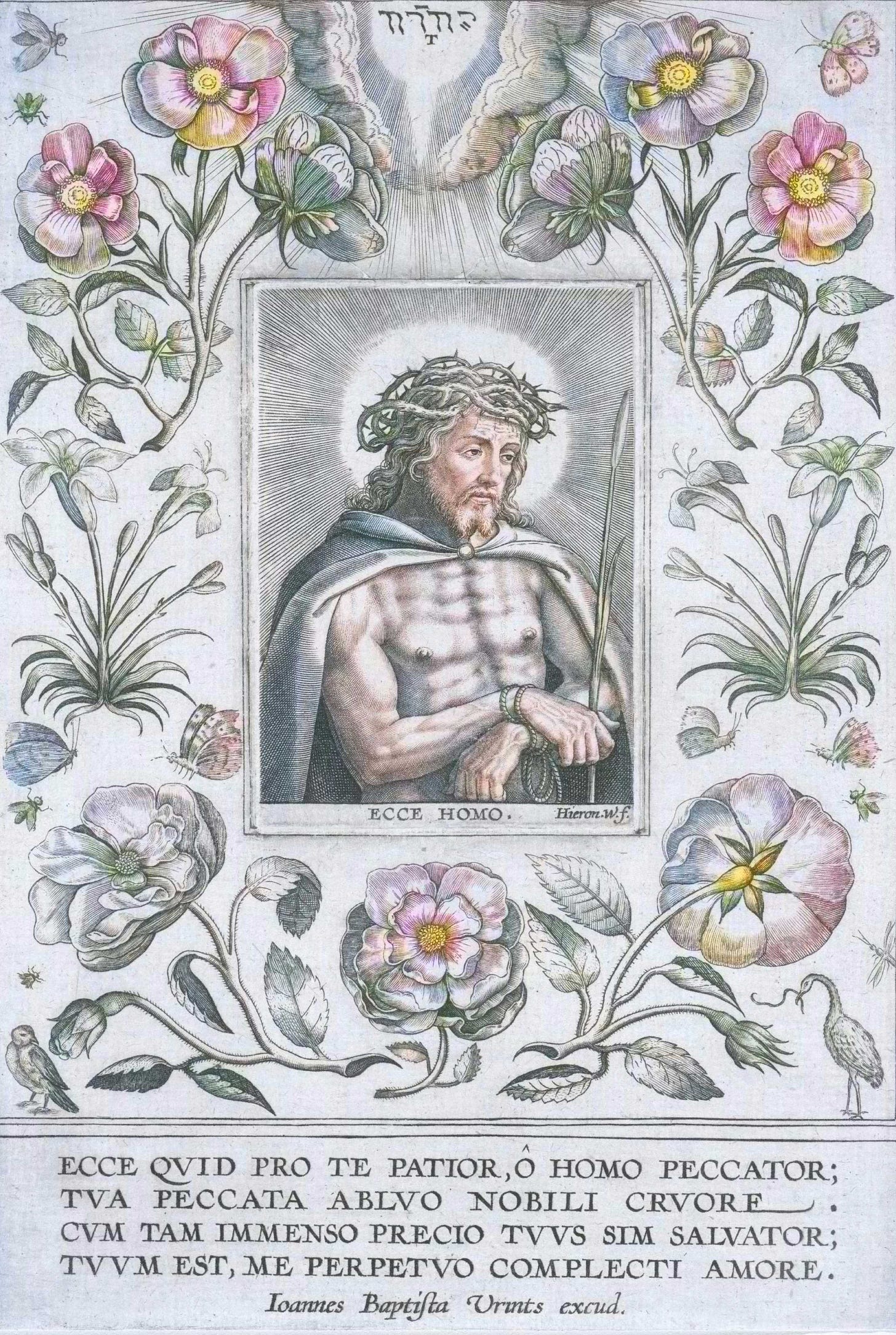
Symbolism that struck me as awesome
Why the circular swings of the censor?
After these two swings, the priest returns to perfume the altar as a whole with three swings of the censer: something that marks the hymns offered in honor of the Word, the second person. These swings are made with a circular motion, because the divine Word is his own praise, and because he praises God on his own. (85)
Why “the secret prayer” is secret
When the priest says his prayers quietly and in secret, he does not turn towards the people beforehand, because these are the prayers which we call Secrets, which Jesus Christ, retiring into the bosom of his Father, offers to him in the secret depths of his heart; they are the prayers of his holy person alone, in which the people plays no part other than to receive the effect of them. . . .
The Secret, that is to say the prayer which is said secretly, is a prayer which Jesus Christ in his person offers to the eternal Father in the depths of his heart and in the bosom of God, beyond the reach of men; that is why the priest does not turn towards the people to invite them to pray with him, and does not say, Oremus, at the start of this prayer, as he does with all the others, but recites it after saying to the people, Orate, fratres. Pray, my brothers, on your own, pray separately: as for me, I now no longer turn towards you. The reality is that he does not turn towards them again until the end of the Mass, until the time when, after the Communion, he invites the people to offer the prayers which the New Testament has offered to God since the institution of the most holy Sacrament, which are contained within this holy sacrifice, and offered to the eternal Father through Jesus Christ in communion with the Church. (106–7)
Triple sign of cross before Gospel
Before he opens the Gospel book, the deacon makes one sign of the cross on the book, and then three signs of the cross on himself, to show that he wishes to express what is written in the book in his spirit, in his mouth, and in his heart.
The first cross, which he makes on his forehead, is to pray the Father, through the cross and death of His Son, to vouchsafe to illuminate us with an understanding of the truths of the Gospel.
The second, which he makes on his mouth, is to pray the Word through his sufferings to vouchsafe to give us the strength to proclaim and profess publicly even at the cost of our death, and death on the cross, the truths of the Gospel, as he himself once did; for he never ceased, since he was the Word, to preach and proclaim these truths, and he did that above all on the cross and in his death, and he continues to reveal those truths through the holy Sacrament, which he wishes to be a sign and a memorial of his death and of all these mysteries. Thus, even when dead, he preaches and proclaims his Gospel by his death and by all that he is: because he is Word, he speaks of the truths of the Father.
He makes the third on his chest, to express our request to the Holy Spirit, through the sufferings and death of Jesus Christ, for a love of the truths of the Gospel, for a love of poverty, suffering, and rejection, which are as it were those truths in summary form. (121)
Dispensing the veil after Pater noster
The subdeacon does not dispense with the veil until the priest has sung, Dimitte nobis debita nostra: “Forgive us our trespasses,” to show that the Old Testament was only admitted to the mysteries, and reconciled to God, after Our Lord Jesus Christ had prayed on its behalf, asking pardon from God for its sins. (143)
The reason the Canon is silent
God must always be worshipped above any comprehension of faith: He must be worshipped as He is in Himself and cannot be understood. God is more greatly praised by our confession that it is beyond our ability to praise Him than by any other thing; He must be praised in silence and in stupor. And to that end the priest, after this great Sanctus, falls silent: he says some prayers in silence, and he calls on the majesty of God to vouchsafe to assist him in His Son Our Lord, incorporating himself thereby in the life of the Word to praise God and glorify Him. (145)
The significance of the Resurrection in terms of salvation
We see clearly in his death the definite signs of God’s anger towards His Son and of His exacting vengeance on His Son in return for our sins; we see all of nature bear witness to God’s feelings of anger dwelling in her; and we see no evidence that His anger has been appeased, no evidence that the demands of His justice have been satisfied. A single Son risen from the dead proclaims that his Father is content, and that He has provided genuine evidence that He is reconciled with us, in giving Jesus Christ back his life, in giving him His own life, and in embracing him in His bosom; and that at the same time in Jesus Christ, as its head, the entire human race has been reconciled with its Father, just as, conversely, all of humanity in the person of the Son, put to death on the cross, bore the effects of the Father’s anger. (183)
Reception of communion
God the Father, who communicates in His Son on the altar, is represented by the priest who communicates at the holy Mass; for the priest sometimes takes the place of the Father, and sometimes that of the Son: here he represents the Father, who consumes and embraces His Son; he takes the place of the Father who commu- nicates in His Son, and who receives him into His bosom: and the kiss of peace which the priest gives to the deacon expresses to the people, by a figure which is coarser and more tangible, this communion of the Father in His Son, which the priest will express even better by communicating really in the host and thus embracing the Son of God, just as the Father embraces him within Himself. And it is this embrace of the Father with His Son that the priest means to express when he embraces the deacon while giving him the kiss of peace. (202)
Suffering
He gives us suffering in proportion to the gifts that he is preparing for us and to the glory that he wishes to impart to us in heaven . . . (211–12).
Why man has to make satisfaction for sins, distinct from Christ’s work on the Cross
Having offended an infinitely infinite Person, they cannot truly make full satisfaction: but nevertheless, having offended Him themselves, they must themselves make satisfaction to Him, and undergo the penalties merited by the sins which they have committed. Our Lord did not come to deprive God of the payment that God could justly demand of us, nor to absolve us from making such satisfaction as we can: but he came to absolve us only from what is beyond our strength; to pay that which we cannot pay, and to satisfy those demands of divine justice that we could not otherwise satisfy. He thus nevertheless leaves us the obligation of paying that which we can, and of making such satisfaction as we can. That is why God the Father did not free us from death, although His Son suffered death on our behalf: He left us with the obligation of suffering death and of making satisfaction to God in this regard, because we can and should. The Son chose to suffer death personally, something that is of infinite merit and has an infinite price, to pay the infinity of God what man was not able to offer Him. He by his own infinite qualities, the qualities of a God, made satisfaction to the immense and infinite qualities and perfections of God, which had been offended by the sin of mankind.
In Jesus Christ therefore we find the supplementary payment covering that which exceeds our capacities; what we do not find is the injustice of depriving God of what we owe Him and of what we are obliged to pay Him insofar as we are able and insofar as the infinity of His infinitely infinite essence can expect it of us. All that we can, we should; and yet without Our Lord and his grace, all that we can amounts to nothing: Adiutorium nostrum in nomine Domini, all our help comes from God through the power of Our Lord. (222–23)
Why Jesus Christ died at 33
He postponed his death to the age of thirty-three, which is the age when a man’s strength is at its peak—so that he could suffer at the age when his capacity to suffer was at its greatest, and so that every part of him might be involved in making satisfaction to divine justice. By this means he shows us that we should spare no part of our strength, and that to satisfy God’s justice we should use all the being and all the power that we used to offend him. (223)
Exhortation to be charitable NOW
[The soul] yearns in Purgatory for purity, as being a most efficacious substitute for the love with which on earth he could have cleansed himself, to draw himself out of the impurity with which his hands are soiled. (225)
Thanks for reading and may God bless you!



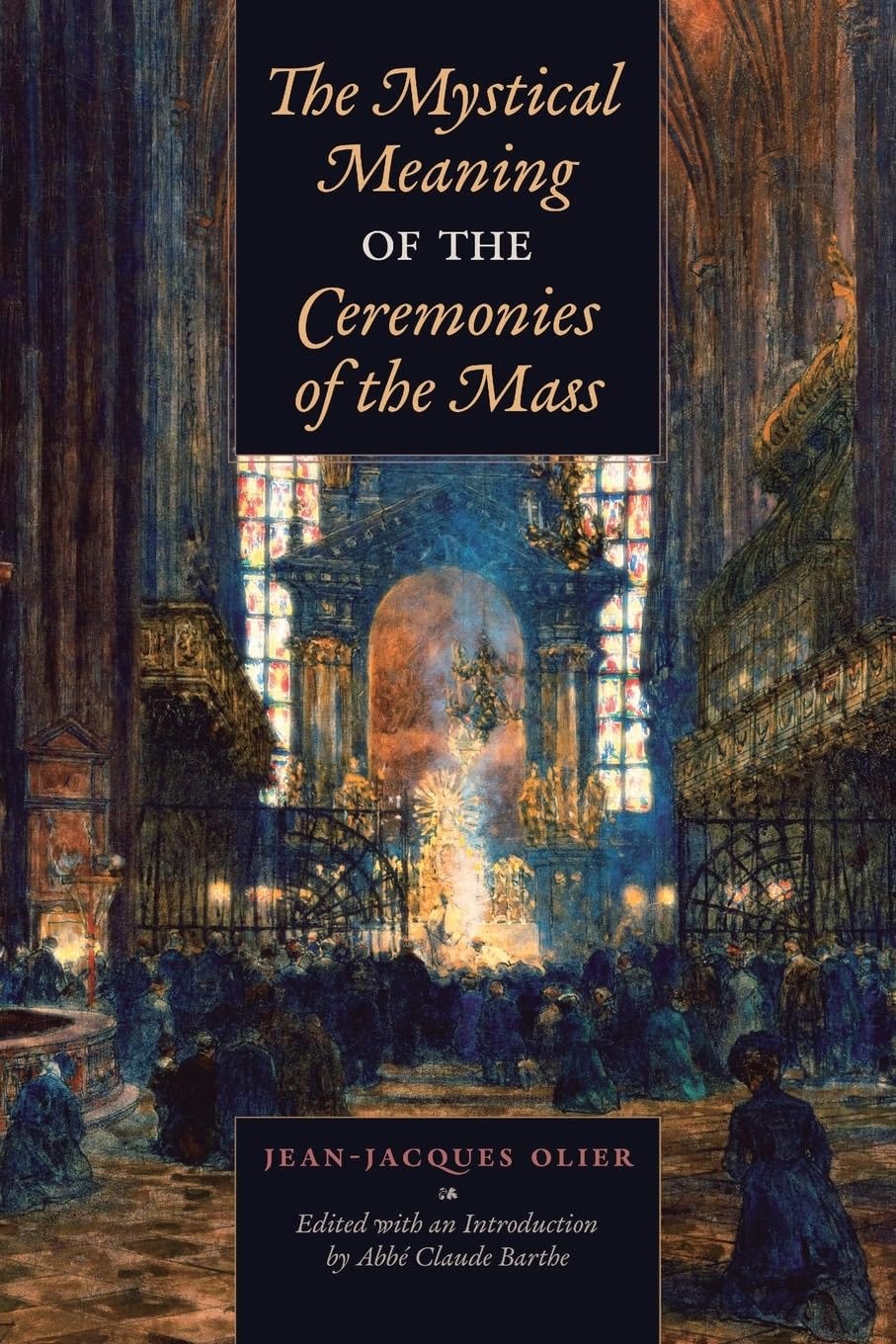
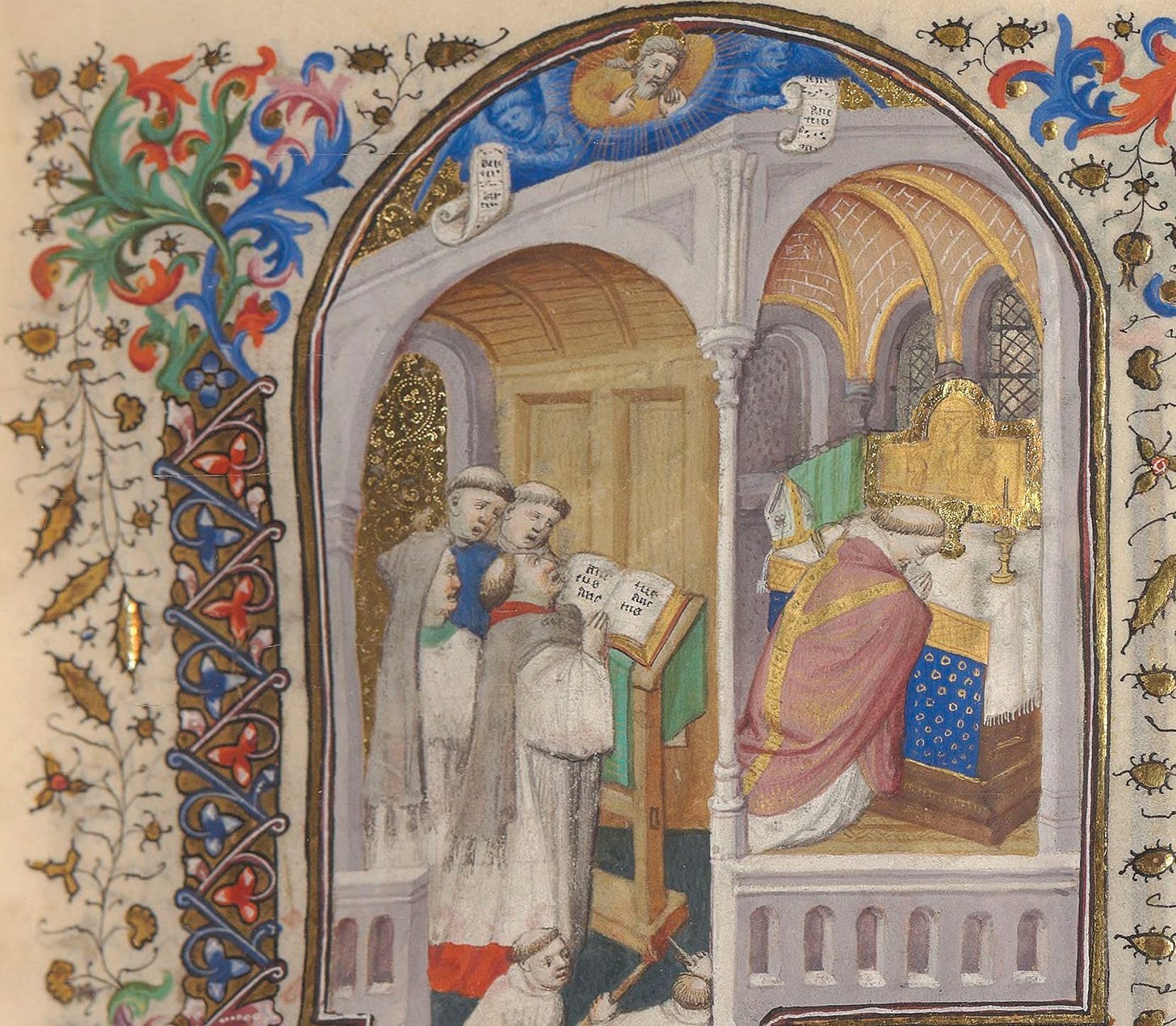

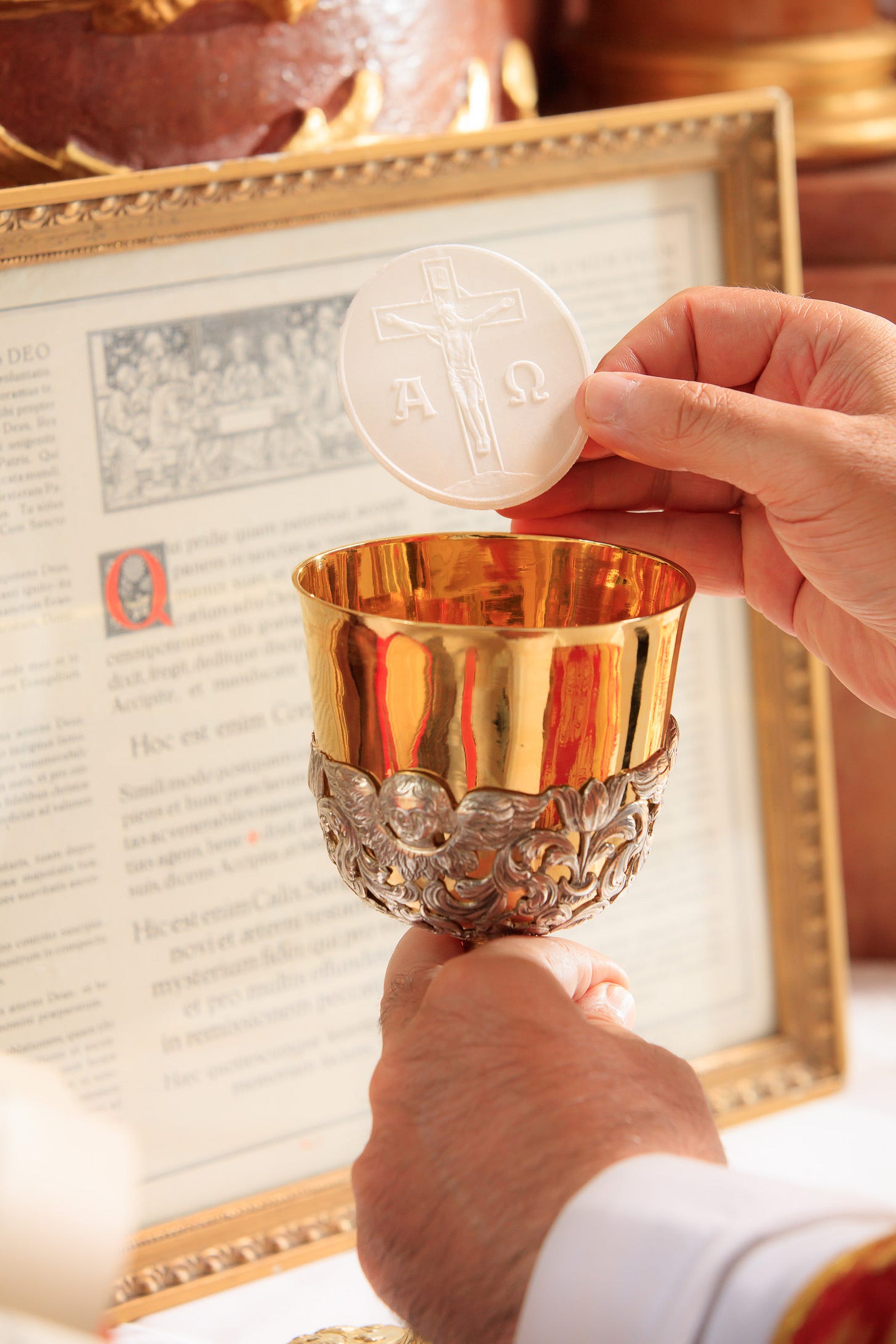
Thank you for this beautiful work. I really appreciate it when Theology, as represented by the Mass/Divine Liturgy is bonded to such expressive Art and the Mysticism of Incarnate reality. These essays will go a long way toward galvanizing the remnant for what certainly lies ahead.
Though true Science remained hidden, I bet you could have added the Ad Orientem relation to the sun with its life giving rays, photons which mysteriously behave as both particles and waves (dual nature?) and witness in the created order how the Father is in His essence, pure unapproachable Light and the Son as the Lamb, the only Light in the City of God.
Mystic
Artistic
Scientific
Theologic
Mast- a standard raised heavenward for sails, banners and communications.
Incredible. Thank you for sharing!